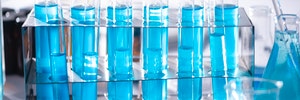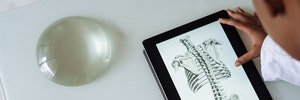UNIT-II
INSTRUCTIONAL MATERIAL FOR PHYSICAL SCIENCE TEACHING
Table of Contents
Qn:1-Write the importance of practical work in Science? How are you planning and organizing of science Laboratories?
Ans:- Importance of Practical Work in science :
The study of physical science is not possible without a Laboratory. Learning by Doing ‘ is one of the cardinal principles of teaching Science.
” To learn is to do science. There is no other wax of learning science “
-Dr. D S Kothari
The significance of practical work are :
- In a laboratory, the students attains practical knowledge from theoretical knowledge.
- The students learn from his experience. He develops the power of thinking, observation, and decision making.
- Knowledge gain through practical work creates a permanent impression in the minds of students.
- The students develop self-discipline and self-confidence.
- The students understand the topic clearly and easily.
- It is based on the psychological principle “Learning by doing “
- It creates interest for research.
- Avoid memorizing the subjects.
- It creates interest in science.
- It develops the habit of doing work systematically.
Planning a science Laboratories :
“Laboratory” word is used for a large room where practical classes are conducted and a group of students carry out practical. Science laboratory is needed to keep instruments, apparatus, chemicals and other safe and secure material ready for use.
Before constructing the laboratory the following factors should be taken into consideration at the planning stages ::
- The number of pupils working at a time.
- The minimum space necessary for each pupils for comfortable working.
- Number of science teachers in school.
- Need for storage accommodation.
- Designing the science classroom and lab in such a way that it could be used for science teaching.
- Organization of laboratory :
- Preparation room: In this room, the lab assistant or teacher can prepare the apparatus for daily experiment.
- Store Room: A proper light and ventilation room where apparatus and articles are stored
- Science Room: In this room, teacher demonstrate the practical.
- Dark Room : It is permanently dark but ventilated. It is used for various purposes requiring darkness like optics.
Qn-2: How many types of Laboratory? How do you prepare Lecture cum Laboratory plan?explain.
Ans: A number of laboratory designed and their equipments have been suggested by different educationist. Some of laboratories at school level which suit the condition of our country and have been accepted by scientists and educationist are :
1. Lecture cum Laboratory
2. All purpose Laboratory
3. Mobile Science Laboratory
4. Lecture room cum laboratory
1. Lecture cum Laboratory plan:
Panel for science education in secondary school (1964) has suggested the following plan:
- Location: Laboratory should be located on ground floor and on the extreme side of the school building.
- Layout : It should have 825 sq ft for 42 students working at a time.
- Furnishings : The panel has suggested portable furniture.
- Light, water and drainage Facilities :The laboratory should get maximum natural light and colour of walls may be light and should not be white causes dirty soon. Continues water supply and sink .Adequate provision for underground drainage is essential.
- Material for construction : The locally available materials should be preferred and the material should be cheap.
2. Lecture Room cum Laboratory
Lecture room cum laboratory plan by Dr. R. H Whitehouse, The plan stands approved by the Punjab Educational Department. According to this plan. We have to consider the following :
- Location: It should be in-ground Floor.
- Layout: It should be 45*25 for a class of 4 students for demonstration and 20 for practical.
- Ventilation: ventilators should be provided with exhaust fans.
- Walls: The walls should be 18 inches thick or more and they can be whitewashed.
- Floors: The floor should be cemented.
- Water supply: A storage tank should be built in the roof on the science laboratory.
- Lighting: Tube lights and bulbs may be fixed for better lighting.
- The BlackBoard : The size of blackboard maybe 10’*4′.
- Sinks: There must be 3 sinks. One for science teacher and two for pupils.
- Drainage: Every laboratory must have proper drainage facilities. Water from the laboratory must be allowed to flow into a pit outside.
- Advantage :
- It is economical.
- Seating accommodation is comfortable.
- Furnishings is cheap, serviceable and easily movable.
- It provides a good atmosphere For learning science.

3. All purpose Laboratory
This type of laboratory serves the purpose of both practical as well as theoretical work.
- The dimension should be 45’*25′ for 40 pupils.
- A store cum preparation room should be attached to laboratory for keeping apparatus, chemicals, glasswares etc.. Shelves may be provided in the walls.
- Blinds may be fitted in the window to make it dark when needed.
- Furnishings can be done with flat tops are better as it servers the purpose of both practical work as well as writing.
- Side benches can have sinks, water and gas taps.
- Between the walls and tables a space 3′ is left out. Each side of laboratory should have a chalk board of 10’*4’to write on.
4.Mobile Science Laboratory :
“Mobile Science laboratory” means “Laboratory on wheels “by NCERT to starts this to popularize science in villages and useful for the training of teachers in remote areas.
- The mobile laboratory consists of primary and secondary science kits, slides, films, projectors, text materials, teachers’ guides, a set of hand tools, charts, working models for demonstration.
- The laboratory is fitted on a van or jeep or minibus.
- The van accomodate 15-20 students at a time.
- The mobile lab also carries a museum to teach science to mass in rural areas.
- It may remains at a place for 1 to 3 days and it serves atleast 120 localities per year.
Qn:3: Write about care and maintenance of Laboratory equipments?
Ans:- The care and maintenance of apparatus is more important than store it. The apparatus should be kept in almirah and checked at regular intervals
For maintaining the apparatus safety the following points should be kept in mind.
- Purchase the apparatus in quantity which can be accommodated in the laboratory.
- Designing a fixed place for each item.
- Update register regularly (permanent stock register, breakable stock register, consumable stock register)
- Keep heavy items like iron stand, distilled water etc in the lower part of the shelves.
- Label all chemicals neatly and keep corrosive and poisonous chemicals under lock.
- Clean the apparatus after use.
- Keep chemicals like silver nitrate in colour bottles other wise it decompose on explore to sunlight.
- Don’t heat gold apparatus immediately.
- Polish glasswares with glass cloth, soap or hot alkali solution.
- Note down the breakages immediately.
Qn:4 : What types of safety measures to be taken in science lab, explain?
Ans- A laboratory is a place where various types of chemicals are stored. These chemicals are harmful and poisonous and they also emits toxic gases. So, A copy of rules and regulations, precautions to be taken and safety measures to be followed in case of accident should be provided to students.
- Ventilator, window and doors of the laboratory :: Ventilator,big windows and doors are essential to provide maximum ventilation. It is very necessary in the events excess fumes and fires.
- Water taps and sinks : leakage of water from taps and pipes make the floor slippery and may cause accidents. So it is essential to check and keep them in good condition.
- Cup board and shelves : This is necessary for safe storage of chemicals and apparatus and keep poisonous substances in locked cupboard
- Electrical shocks and wiring : Replace broken Electrical sockets or seal them with tapes.
- Apparatus and equipments : Remove broken and cracked glassware and also maintain the other equipments in good condition to avoid accidents.
- Benches, stools and floors : keep these in good condition to avoid accident.
- Safety equipments : Equip the laboratory with 1.sand bucket 2. Fire blanket 3.Dustbins 4. Rubber gloves 5. Asbestos safety screen.
- Fire Extinguisher : Every laboratory must fire extinguisher. The teacher as well as the students should be trained to use it.
Qn:5 What is improvised apparatus? Write the values of improvisation. Give examples.
Ans-
- Improvised apparatus means homemade apparatus.
- If once the interest of students is developed in improvising apparatus they repeat class experiment at home by homemade apparatus.
- It helps to improve their laboratory technique.
Value of improvisation :
- Saves much money
- Develop useful habits and dignity of labour.
- Develop Skill and basic principles
- Utilization of leisure
- Hand and head coordination
- Longer retention
- Joy of creation
- Scientific thinking
- Confidence to face problems
- Self-criticism and auto suggestions
Examples of some improvised pieces of apparatus
- Metylated spirit burner
- Voltmeter
- Astronomical Telescope
- Working model of lungs
Qn :6 what do you mean by self Learning material (SLM) ? Write its characteristics?
Ans: The material which are designed in such a way to have the teacher built into facilitate the learning process are called as self learning material.
The self learning materials in various forms -print, audio, video, multimedia, web etc in order to help distance learning study these and learn in their own time and at their own pace.
Characteristics of self learning material :
- Self Explanatory: The self learning material are written in a way that doesn’t require an intermediary to explain the contents.
- Self contained : The self learning material are prepared in such a way that the learner normally do not require additional material to material to learn the contents or subject matter.
- Self directed: As learner study in isolation. It is important that the self learning materials are designed in a way that provides necessary direction to learner to study and progress.
- Self motivating :One of the Major roles of a teacher in the face to face education system is to motivate and encourage the learners towards study and research.
- Self Evaluation : It is important for learner to know how they are progressing in their studies, particularly, because they are quasi-permanently separated from the teacher and other their peer group.
Types of Self learning material
According to Lock Wood, there are three types of self learning material
- Tutorial in print
- Reflective action guide
- Dialogic
Components of self learning material :
At IGNOU, the format of self learning material used covers the following :
- Beginning of the unit : 1.Title 2 Contents 3.Information 4.objectives
- Main body : 1.section and subsection 2.illustration3. Objectives
- End material:1.summary 2. Glossary 3. References and further reading.
Advantages of self learning material :
The students learn more effectively when they learn on their own .self learning develops critical thinking in handling of study material on one’s own and enhances communicative skills and self reliance.
<hr\
Another B.Ed Contents
Top 50 Educational Policy Full From | Establishment Date


